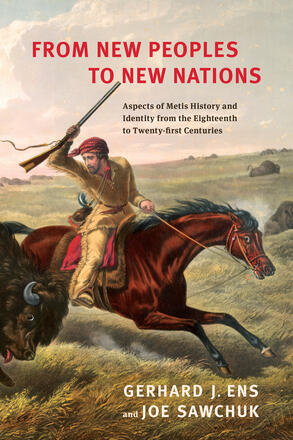
From New Peoples to New Nations
Aspects of Metis History and Identity from the Eighteenth to the Twenty-first Centuries
Description
“Gerhard Ens and Joe Sawchuk have produced a compelling piece of work – one that will inform and contribute to ongoing debates within Métis studies for years to come. ” – Nicole St-Onge, University of Ottawa
From New Peoples to New Nations is a broad historical account of the emergence of the Metis as distinct peoples in North America over the last three hundred years. Examining the cultural, economic, and political strategies through which communities define their boundaries, Gerhard J. Ens and Joe Sawchuk trace the invention and reinvention of Metis identity from the late eighteenth century to the present day. Their work updates, rethinks, and integrates the many disparate aspects of Metis historiography, providing the first comprehensive narrative of Metis identity in more than fifty years.
Reviews
"Tracing the intricate and layered process by which new peoples become new nations within politically, economically, and symbolically charges matrices, Ens and Sawchuk have contributed a theoretically and empirically bountiful text that one hopes will generate discussions within and outside of Métis studies. "
- Nicholas Barron
‘As a result of its diligent research and unique analytical perspective, From New Peoples to New Nations will be a valuable resource for anyone interested in historical and contemporary Métis identities. ’
- Gabrielle Legault
‘Ens and Sawchuck have written the most comprehensive and balanced view of Métis history to date, which will provide much-needed context for all who seek to better understand who the Métis are and the centuries of struggle they have faced…. Highly recommended. ’
- B.F.R. Edwards
‘From New Nations to New Peoples offers an important update to Métis history and historiography… Ens and Sawchuck’s novel approach to the topic allows them to convincingly posit that Métis ethno-genesis is perpetual and continues to the present day via "dialogical processes".
- Émilie Pigeon
‘For its comprehensiveness, it would make an excellent textbook for undergraduate courses… Its considerable bibliography and broad treatment of Metis history will undoubtedly make it as a general reference on Metis history and identity. ’
- Camie Augustus